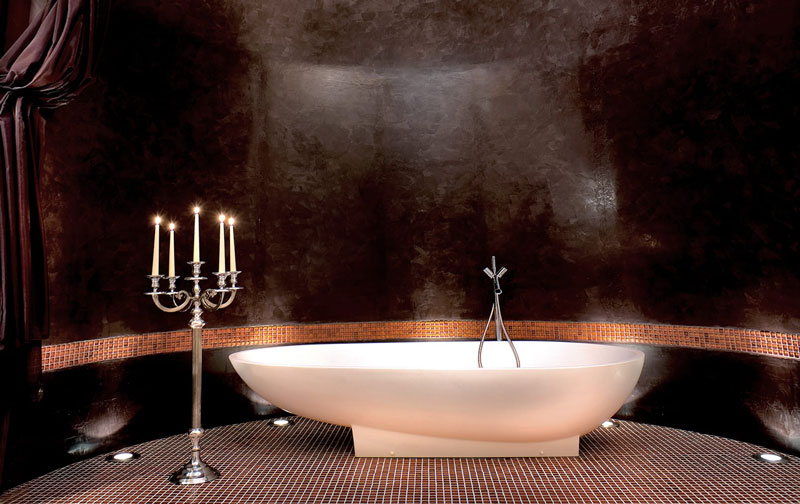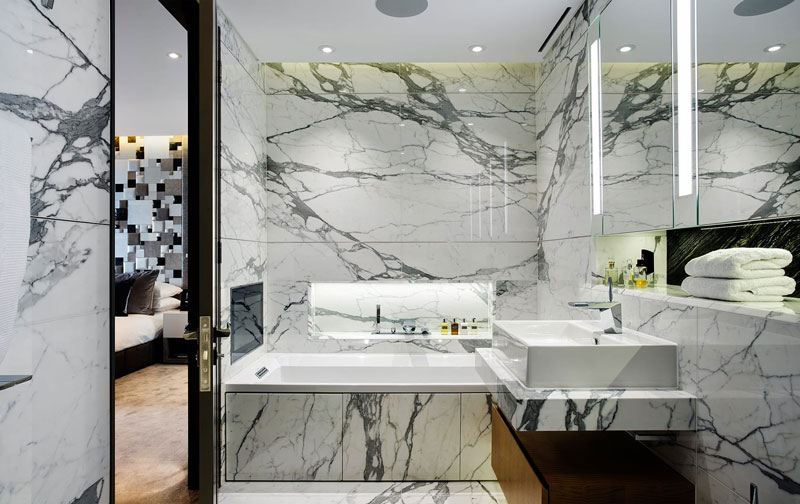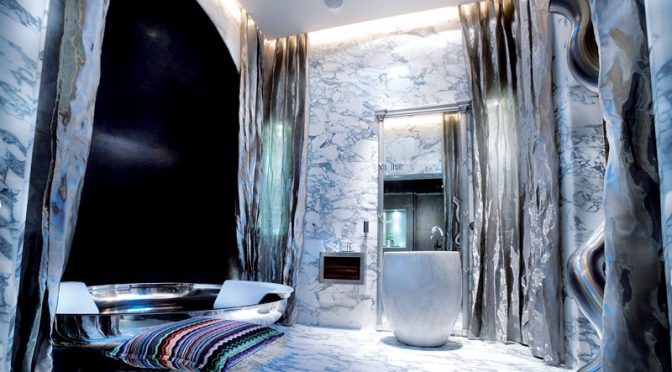In many properties, the bathroom is considered one of the key areas – a sanctuary from the outside world, where one can spend time alone to reflect and relax. The image of a bath overflowing with bubbles, while the occupier sips an ice cold cocktail, bathed in moody lighting, is the epitome of pure indulgence and decadence.
Whether you have a small space or a large suite to consider, there are hundreds of schemes from which to choose. And when it comes to how you want to use the space, from a contemporary wet room, or glamorous freestanding bath, designs by René Dekker all have one thing in common – the unmistakable scent of luxury.
Opting for a bath or shower (or possibly both) is very much up to the individual and their practical needs. According to research by YouGov Plc, in this country, the bath versus shower divide is pretty even with 47 per cent choosing the former, and 43 per cent preferring the latter. This is now changing, however, in line with results from across the pond – in America, 62 per cent of home architects have recently revealed an increased interest in walk-in and stall showers.
So, if you’re a bathing Brit, the chances are you still want to indulge in a steaming soup of soapy suds, and have a lovely problem to face: what kind of bath to choose…
Although there’s a wide selection available, a top interior designer will be able to direct towards your perfect deign, while still keeping within the aesthetics of the decorating scheme.

Sifting through the options, the first thing to decide is whether to go for an inset or freestanding design. Because of its streamlined appearance, the former is often associated with more contemporary styles, and also has the benefit of being able to add extra embellishment (such as tile or colour) as well as storage, thanks to its side panel.
Freestanding designs, meanwhile, are usually chosen for larger bathrooms and can incorporate both a traditional as well as a cutting edge look.
Once the location and type of bath options have been selected, the next step is to choose the material of bath desired, and there’s a surprising array – from ceramic, composite, or metal, all of which, in the hands of top of the range designer, can create a statement or focal point.
Freestanding ceramic or composite designs are extremely durable and, with their simple uninterrupted lines, can create a sense of unity and calm in a bathroom, particularly in a more contemporary context. They also boast a soft, warm finish unlike their metallic cousins.

Metal designs boast a range of finishes and benefits, but all come with a sense of tradition and history. Cast iron baths are usually moulded, then enamelled and polished. These are the perfect choice for a traditional look as they can come with claw feet, and can be painted to coordinate with a specific colour scheme in a room.
Copper designs are often available in a selection of finishes, ranging from highly polished (giving it an aged look) or black for a sleek, more contemporary feel on the outside, while the inside can be nickel-plated or white enamelled.
Nickel is a lightweight option made from hand-beaten copper sheeting which is then electroplated to create a durable, tarnish-resistant surface to the copper beneath. Meanwhile baths made from brass have huge shine appeal and a great sense of drama.
Whether the choice is metal or stone, the shape square or oval, the bath is definitely the place to indulge oneself, to relax in whatever way suits you best. As Prue Leith the cook, author and television personality once said: “My guilty pleasure is a deep, eco-unfriendly, hot bath. Preferably with a glass of champagne and someone sitting on the loo seat gossiping.”
